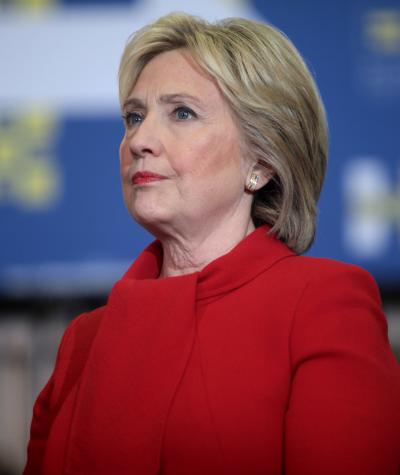During oral arguments in McCutcheon v. FEC three years ago, Justice Samuel Alito dismissed the Campaign Legal Center’s analysis showing how, absent limits on the total amount that donors could give to multiple political committees, candidates could use joint fundraising schemes to raise huge, potentially corrupting contributions.
These scenarios, Justice Alito claimed, are “wild hypotheticals that are not obviously plausible.”
Hillary Clinton, though, is proving that Campaign Legal Center was right all along.
Politico reports that the Clinton campaign is exploiting new loopholes created by McCutcheon to sidestep contribution limits:
The venture, the Hillary Victory Fund, is a so-called joint fundraising committee comprised of Clinton’s presidential campaign, the Democratic National Committee and 32 state party committees. The setup allows Clinton to solicit checks of $350,000 or more from her super-rich supporters at extravagant fundraisers including a dinner at George Clooney’s house and a concert at Radio City Music Hall featuring Katy Perry and Elton John.
Although ostensibly designed to jointly raise money for the Clinton campaign and state parties, in practice “less than 1 percent of the $61 million raised by that effort has stayed in the state parties’ coffers,” Politico reported.
Instead, the massive checks that Clinton raised for the joint fundraising committee bearing her name have largely flowed to the Democratic National Committee (DNC), which will in turn spend the funds to boost her campaign.
What this means is that the $5,400 limit on contributions to a presidential campaign and $33,400 limit on donations to party committees have been rendered meaningless – just as Campaign Legal Center had warned would happen as a result of McCutcheon.
This further tilts the political playing field in favor of the handful of wealthy special interests who can afford to write $350,000 checks.
CLC Was Right All Along
Pre-McCutcheon, this sort of fundraising would have been circumscribed, with the total aggregate amount that an individual could give to all candidates and party committees, combined, capped at $123,200 per two-year election cycle. But in the 2014 McCutcheon decision, the Supreme Court struck down those limits on aggregate giving, allowing donors to max-out to as many different committees as they desire.
In CLC’s friend-of-the-court brief filed with the Supreme Court, we warned that if the justices struck down the aggregate limits, “one donor would be able to give a joint fundraising committee a single check…[and] candidates and parties would likely work together to ensure that candidates who solicit large amounts for their parties would also be the beneficiaries of the spending by their parties.”
Sounds a lot like Clinton’s joint fundraising scheme, doesn’t it?
CLC had made similar arguments before the district court in McCutcheon, and that lower court cited our brief when it upheld aggregate limits as a constitutional means of preventing circumvention of contribution limits. As that court described:
Eliminating the aggregate limits means an individual might, for example, give half-a-million dollars in a single check to a joint fundraising committee comprising a party’s presidential candidate, the party’s national party committee, and most of the party’s state party committees. After the fundraiser, the committees are required to divvy the contributions to ensure that no committee receives more than its permitted share, but because party committees may transfer unlimited amounts of money to other party committees of the same party, the half-a-million-dollar contribution might nevertheless find its way to a single committee’s coffers.
In reversing the district court, however, Chief Justice John Roberts dismissed the scenarios described by CLC and adopted by the lower court as “divorced from reality.”
He was wrong. Clinton’s joint fundraising committee closely tracks the scenario predicted by CLC and the district court.
Now, a donor can write a single $350,000 check to the Hillary Victory Fund, and although the funds are first divvied up between the campaign, the DNC, and the 32 participating state party committees, the majority of the funds nevertheless find their way to the DNC’s coffers, and are spent to support Clinton.
This scheme makes it easy for wealthy donors to blow past the $5,400 limit on contributions to Clinton and the $33,400 limit on DNC contributions, allowing billionaires to write six-figure checks that will be spent by the DNC directly in support of the Clinton campaign.
Republican Party leaders have also been setting up a similar joint fundraising committee in the weeks since Donald Trump became the presumptive GOP nominee.
Trump, like Clinton, will raise big checks for the joint committee, with the expectation that the funds will ultimately flow to the Republican National Committee for Trump’s benefit.
And Trump will likely need the support; Politico reports that “Trump may be more reliant on the national party than past presidential nominees since his campaign has invested relatively little in field staff, voter data or a fundraising operation.” And thanks to McCutcheon, Trump can bankroll the RNC’s support for his campaign with huge checks funneled through a joint fundraising committee.
At best, the Supreme Court’s decision in McCutcheon shows that the justices are simply naïve about the way that fundraising works. But the justices can’t claim that we didn’t warn them.
